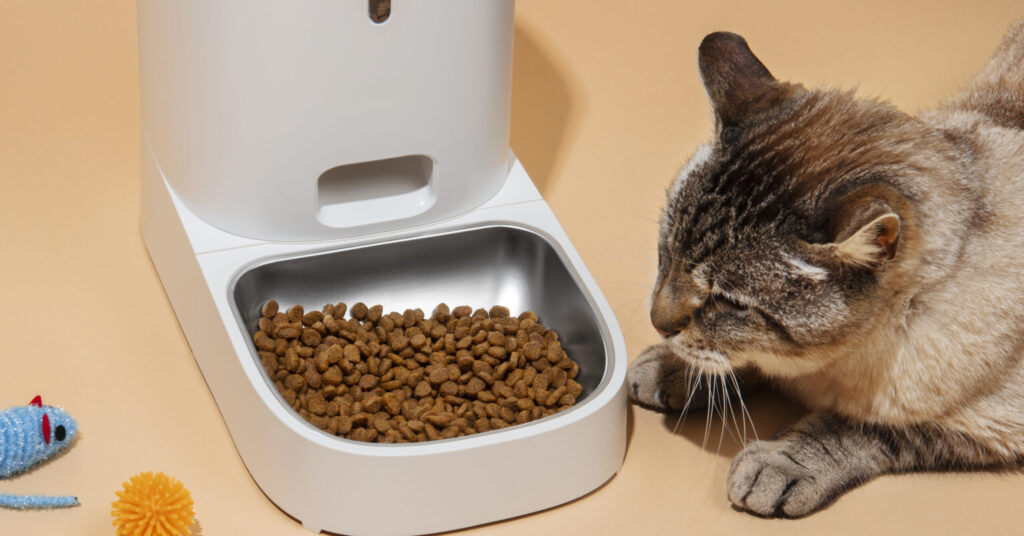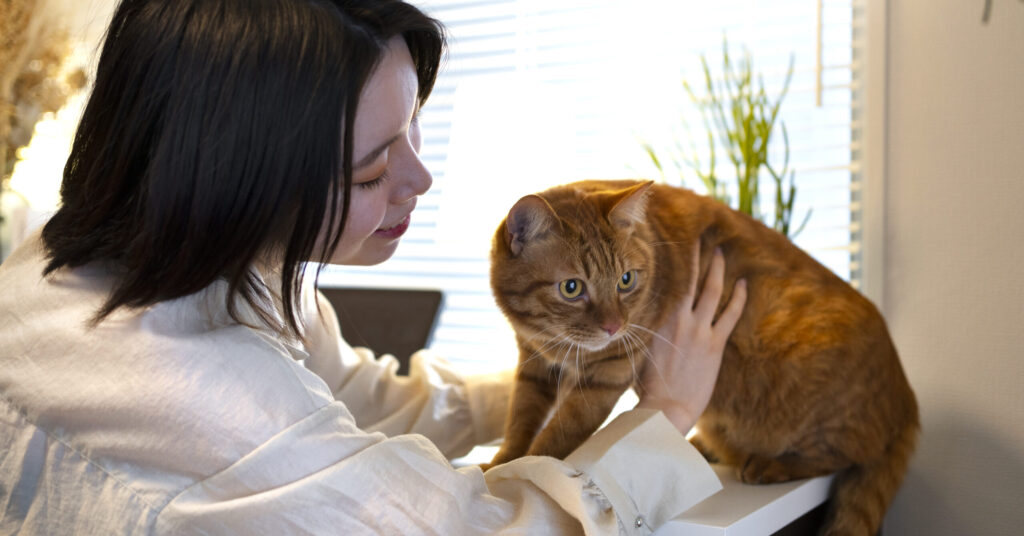You’ll find lots of cat food brands in Malaysia, with prices all over the place. But, fancy packaging can hide what’s really inside. Pet owners have to sort through all the health and taste claims, and if they don’t read labels carefully, they could hurt their cat’s health. Misreading those labels can mean underfeeding or overfeeding, which leads to lower energy and even serious health problems. That’s why this guide is here – to help Malaysian pet owners make smart choices and keep their cats healthy and happy.
Understanding Your Cat’s Daily Nutritional Needs
Cats are obligate carnivores, meaning their dietary requirements are very different from humans and even dogs. Their bodies are designed to efficiently process nutrients derived from animal sources. This translates to a diet rich in protein, moderate in fats, and low in carbohydrates. Understanding these fundamental needs is the first step in providing the best cat food.
Why “Best Food” Matters
The best cat food is not just about filling a bowl. It’s an investment in your cat’s overall health and well-being. A balanced, high-quality diet contributes to:
- Optimal growth and development, especially in kittens.
- A healthy, glossy coat, reflecting internal health.
- A robust immune system, guarding against illnesses.
- Efficient digestion, minimizing gastrointestinal issues.
- Healthy weight management, preventing obesity, a common concern for indoor cats in Malaysia.
- Increased longevity, allowing for more years of companionship.
Common Malaysian Pet Owner Concerns
Malaysian pet owners often face these challenges:
- Affordability: Balancing quality with budget constraints in a cost-conscious market.
- Availability: Ensuring access to premium brands and specialized diets, especially in suburban areas.
- Specific Breed Requirements: Catering to the diverse needs of breeds popular in Malaysia, such as Persians, Siamese, and domestic shorthairs.
- Food Sensitivities: Identifying and managing common allergies.
Cat Food Quality
Not all cat food is the same. Some are created using meat powder, while others use real meat. Furthermore, processing methods can affect nutrient preservation. Therefore, understanding both the ingredients and processing methods is crucial.
- High-Quality Ingredients:
- Animal-based protein as the primary ingredient (chicken, lamb, fish).
- Essential fatty acids (Omega-3 and Omega-6) for skin, coat, and joint health.
- Vitamins and minerals for overall well-being.
- Minimal fillers, by-products, and artificial additives.
- Low-Quality Ingredients:
- Excessive grains and carbohydrates, which can lead to weight gain and digestive issues.
- Artificial colors, flavors, and preservatives, potentially causing allergic reactions.
- Unidentified meat sources, lacking transparency and nutritional value.
- High levels of by-products, lacking essential nutrients.
Difference of Extruded Kibbles VS Slow-Baking Kibbles
Fundamentals of Cat Nutrition
- Protein: Cats thrive on animal-based protein. As IAMS™ Malaysia states, “Because cats need the nutrients found in animal sources, it’s best to pick a food in which a primary ingredient (one of the first ones listed) is an animal-based protein source such as chicken, lamb, fish, egg, or one of their by-products.”
- Fats: Provide energy, support cell function, and enhance the palatability of food.
- Vitamins and Minerals: Essential for various bodily functions, including immune response and bone health.
- Taurine: A crucial amino acid for heart and eye health, which cats cannot produce themselves.
- Hydration: Especially vital in Malaysia’s climate. Wet food can supplement water intake, preventing dehydration and urinary issues.
Types of Cat Food Available in Malaysia: Pros & Cons
- Dry Kibble:
- Pros: Convenient, affordable, promotes dental health.
- Cons: Low moisture content, potential for dehydration, can be less palatable for some cats.
- Wet Food:
- Pros: High moisture content, palatable for picky eaters, beneficial for urinary health.
- Cons: More expensive, requires proper storage to prevent spoilage.
- Raw Food:
- Pros: Mimics a cat’s natural diet, potentially higher nutrient bioavailability.
- Cons: Requires careful handling to prevent bacterial contamination, can be time-consuming and expensive.
- Home-Cooked Meals:
- Pros: Control over ingredients, can be tailored to specific dietary needs.
- Cons: Time-consuming, requires careful planning to ensure nutritional balance, potential for deficiencies if not done correctly.
Specific Dietary Needs Based on Life Stage and Lifestyle
- Kitten Nutrition: High-protein, calorie-dense food for rapid growth and development.
- Adult Cat Nutrition: Balanced diet for maintaining energy levels and overall health.
- Senior Cat Nutrition: Lower calorie, easily digestible food with joint support and cognitive function benefits.
- Indoor Cats: Weight management formulas and hairball control diets.
- Outdoor Cats: Higher calorie needs to support increased activity levels.
- Cats with Specific Health Conditions: Specialized diets for allergies, urinary tract issues, kidney disease, etc.
Choosing the Right Food
| Brand | Pros | Cons | Suitability for Malaysian Cats |
| Royal Canin | Breed-specific formulas, high-quality ingredients, scientifically formulated | More expensive, extruded kibbles | Good for specific breed needs, but consider climate and availability. |
| Acana | High-protein, grain-free options, uses whole prey ingredients | contain peas/lentils, which have been known to cause sensitivity in some cats. | Excellent for cats with sensitivities and those needing high protein, but price may be a concern. |
| HealthyMews | High-quality protein meat and fish, slow baked, gluten-free, rich in bamboo fiber, omega fatty acid, free from 11 unwanted addictive | Premium kibbles are formulated to meet AAFCO’s high protein nutrient profiles for essential growth, maintenance, reproduction, or all life stages, | Suitable for all life stages, 100% natural ingredients, taurine, building acid amino reassembled into the type of protein that the cat needs at that time. |
| SuperbBowl | Premium ocean fish, slow baked, suitable for indoor cats, gluten-free, rich in omega fatty acid, no preservatives and artificial colour. | Premium kibbles that meet AAFCO’s complete and balanced nutrition to support your feline’s growth | Recommended for indoor cat, rich in protein from ocean fish, taurine, and complete and balanced nutrients for your cat’s healthy growth. |
| Whiskas | Widely available, affordable, and palatable for many cats | Lower quality ingredients, high in fillers, may not meet all nutritional needs | Budget-friendly for some, but not ideal for long-term health. |
Conclusion
Providing the best cat food is a vital aspect of responsible pet ownership in Malaysia. By understanding your cat’s specific nutritional needs, considering the unique challenges of our climate and market, and carefully evaluating ingredient quality, you can make informed choices that promote your cat’s health and happiness. Consult with your veterinarian for personalized recommendations and prioritize high-quality, animal-based protein to ensure your feline companion thrives.
Resources:
IAMS™ Malaysia, https://my.iams.asia/
Universiti Putra Malaysia, “A Survey On The Awareness Of Pet Owners Towards The Pet Food Label”, https://www.upm.edu.my/



